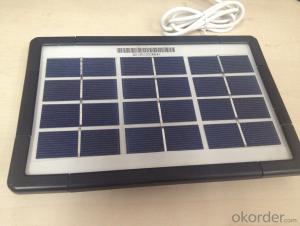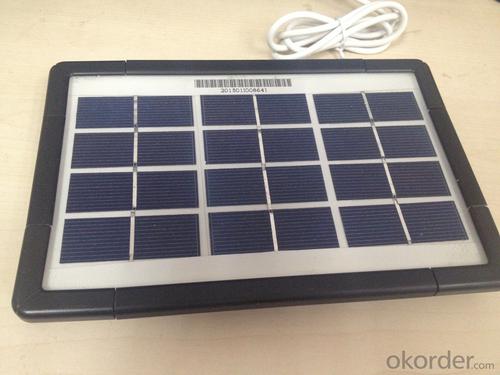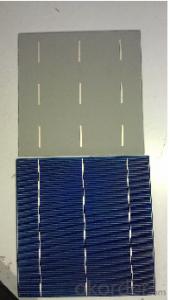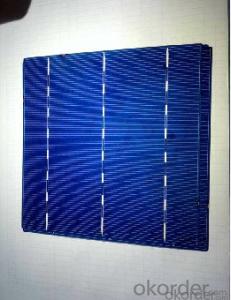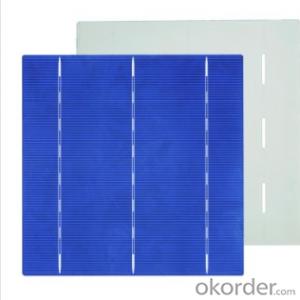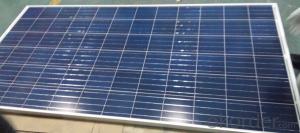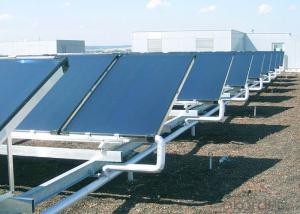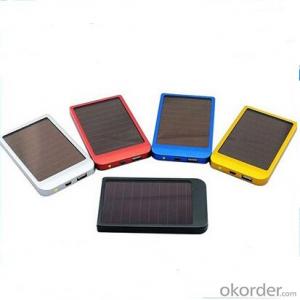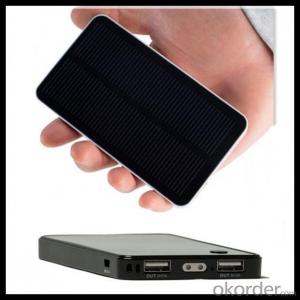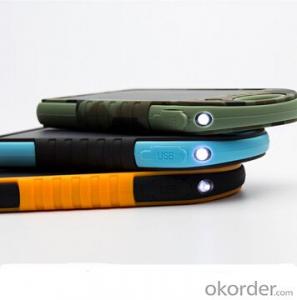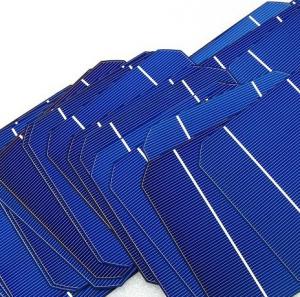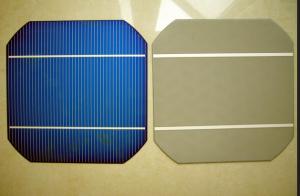High Efficiency Silicon Solar Cells CNBM Solar Mobile Charger for Cellphone - Conveniently Carry
- Loading Port:
- Shanghai
- Payment Terms:
- TT OR LC
- Min Order Qty:
- 1000 pc
- Supply Capability:
- 500000 pc/month
OKorder Service Pledge
OKorder Financial Service
You Might Also Like
Brief Introduction of Solar Mobile Charger
This is a new good product which is quite easy to use. Traditional solar panels cannot use directly, which need to connect a charger controller that can operate LED Lights or other DC applications.
Our product is a new product which revolutionary change the solar panels’ outlooks. We integrate charge controller in the junction box, which didn’t need to add a charge controller additionally. It have to advantage of easy portable, easy use and convenient to take.
With our product of Solar Panels, you can get great profit for this. For this kind product are applied to remote area which is short of electricity.
1. Advantage of Solar Mobile Charger
1)High module conversion efficiency, through superior manufacturing technology.
2) 0 to +5W positive tolerance for mainstream products.
3) Certified to withstand high wind loads and snow loads.
4) Anti-reflective, highly transparent, low iron tempered glass.
5) Excellent performance under low light environment.
2. Specification of Solar Mobile Charger
Main Parts | Specification | Parameters |
Solar Panel | Polycrystalline | 2W |
Solar Control System | Controller | Integrated |
Junction box | ||
Output | Maximum Power | 2W |
Maximum Power Voltage | 5.9V | |
Maximum Power Current | 0.34A | |
Short Circuit Current | 0.38A | |
Open Circuit Voltage | 7.4V |
3. Materials of Solar Mobile Charger
1) Solar cell------conversion efficiency of solar cells: 17%-24%
2) Front glass------3.2mm, high transmission, low iron, tempered glass
3) EVA------excellent anti-aging EVA
4) TPT-------TPT hot seal made of flame resistance.
5) Frame------reinforced anodized aluminum frame.
6) Junction box------IP65 rated, high quality, with diode protection.
7) Charger Controller—Integrated Charger Controller into Junction Box
4. Application of Solar Mobile Charger
1) Any large or small on-grid or off-grid solar power stations.
2) Commercial and industrial building roof-top systems
3) Residential roof-top systems
4) Any commercial or industrial ground mounting systems
5) Solar lights, highway solar street lamp, solar car / electric vehicles, any field of environmental protection.
5. Warranty of Solar Mobile Charger
1) We can supply the solar panel from 5W to more than 300W.
2) Warranty: 3-5 Years products warranty, and 90% of its nominal power after 10 years, 80% of its nominal power after 25 years
3) We do OEM or ODM .
Picture of Solar Mobile Charger
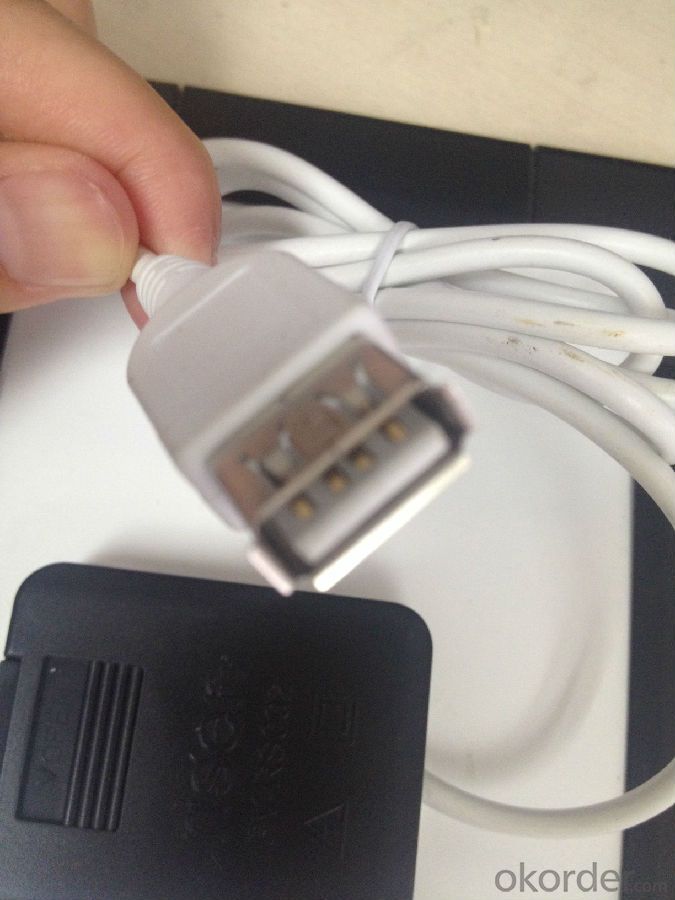
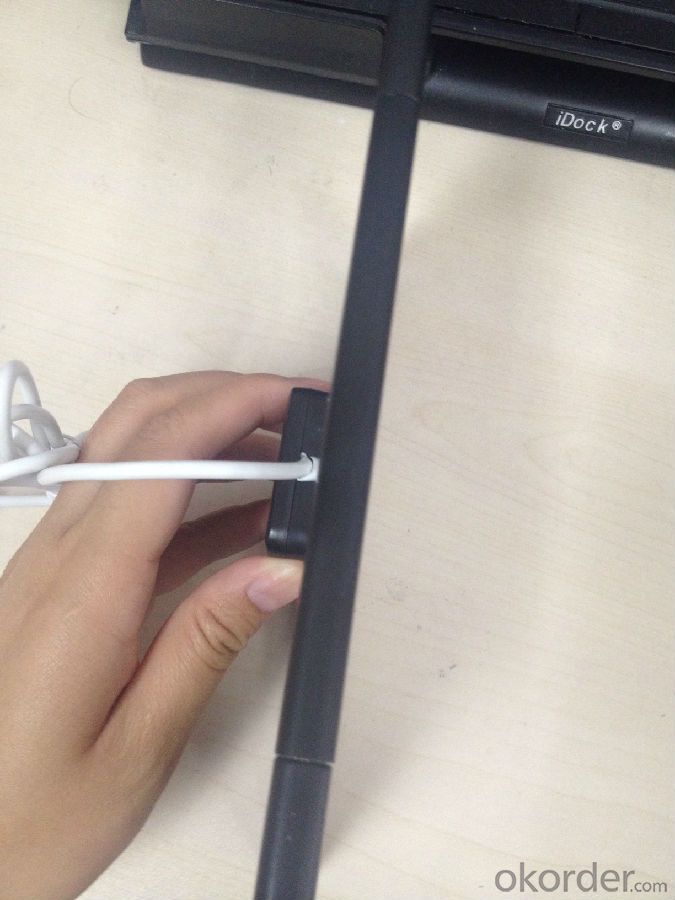
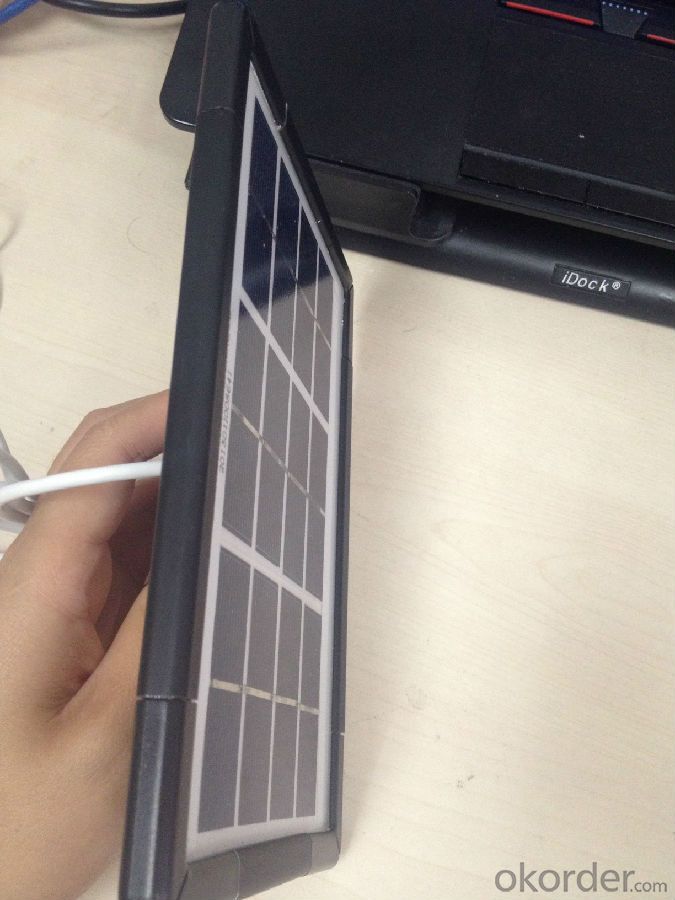
FAQ
1. What’s the MOQ for these kind panels?
For it is small panels with the power output of 2W, the MOQ is at least 1000 Pieces. We will supply samples for our customer.
2. Does it charge for samples?
Sorry, for our panels are not low value products, it is hard for us to supply samples to our customers freely.
3. Can you do OEM for us?
Yes, we supply OEM service for our customers. And we supply customize services to our VIP customer.
- Q: Can solar cells be used for powering water treatment plants?
- Yes, solar cells can be used for powering water treatment plants. Solar energy can be converted into electricity through photovoltaic panels, which can then power the various processes involved in water treatment, such as filtration, disinfection, and pumping. Solar-powered water treatment plants offer a sustainable and renewable energy solution, reducing reliance on traditional power sources and contributing to a greener and more environmentally friendly approach to water treatment.
- Q: How do solar cells handle hail or other severe weather conditions?
- Solar cells are designed to be durable and withstand various weather conditions, including hail and severe weather. They are made with sturdy materials like tempered glass or polycrystalline silicon, which can endure hailstorms without significant damage. Additionally, solar panels undergo rigorous testing to ensure their ability to withstand impact and extreme weather events.
- Q: What is the cost of producing a solar cell?
- The cost of producing a solar cell can vary depending on various factors such as the type and quality of materials used, manufacturing processes, scale of production, and market conditions. However, advancements in technology and economies of scale have significantly reduced the cost of solar cell production over the years. On average, the cost of producing a solar cell can range from a few cents to a few dollars per watt.
- Q: What are the advantages of monocrystalline silicon and polycrystalline silicon in solar power?
- polysilicon, ribbon silicon, thin film materials (including microcrystalline silicon-based film, compound-based film and dye film). From the industrial development point of view, the focus from the single crystal to the direction of the development of polysilicon and film, the main reason: [1] solar head can supply more and less head and tail; [2] for solar cells, (3 hours) The production process of polysilicon is progressing continuously. The automatic casting furnace can produce more than 200 kilograms of ingot per production cycle (50 hours),
- Q: What is the impact of solar cells on wildlife?
- The impact of solar cells on wildlife is generally minimal and beneficial. Solar cells produce clean energy without emitting harmful pollutants or greenhouse gases, reducing air and water pollution that can negatively affect wildlife habitats. Additionally, solar energy infrastructure typically occupies a small footprint and can coexist with wildlife habitats, allowing animals to continue their normal behaviors. However, there have been some concerns about the potential for bird collisions with solar panels and the disruption of desert ecosystems during large-scale solar installations. Overall, compared to traditional energy sources, solar cells have a much lower impact on wildlife and contribute to a more sustainable future.
- Q: What is the impact of saltwater exposure on solar cell efficiency?
- Saltwater exposure can have a significant negative impact on solar cell efficiency. The saltwater can corrode the metal components of the solar cells, leading to a decrease in their performance and overall efficiency. Additionally, the saltwater can create a conductive pathway that can bypass the solar cells, resulting in a loss of electrical energy. Therefore, it is crucial to protect solar cells from saltwater exposure to maintain their efficiency and prolong their lifespan.
- Q: What are the disadvantages of using solar cells?
- One disadvantage of using solar cells is their high initial cost. The installation and setup of solar panels can be expensive, making it less accessible for some individuals or households. Additionally, solar cells are dependent on sunlight, so their efficiency can be affected by weather conditions, such as cloudy days or limited sunlight during winter months. Moreover, the production of solar cells involves the use of certain materials that can have environmental impacts, such as the extraction of rare minerals. However, advancements in technology and decreasing costs are gradually reducing these disadvantages and making solar energy a more viable option for sustainable energy production.
- Q: Can solar cells be used in drones?
- Yes, solar cells can be used in drones. In fact, many drones are equipped with solar panels to harness solar energy and power their operations. This helps to extend flight time, reduce reliance on traditional batteries, and make drones more sustainable and energy-efficient.
- Q: Is solar cell technology very developed and v applied to life a lot?
- Solar cells are used very much because not only do they save energy but also save money.
- Q: How do solar cells perform in areas with high levels of dust storms?
- Solar cells may experience reduced performance in areas with high levels of dust storms due to the accumulation of dust particles on their surface. These dust particles can block sunlight, reducing the amount of energy that can be converted into electricity. Regular cleaning and maintenance of the solar panels may be required to ensure optimal performance in such environments.
Send your message to us
High Efficiency Silicon Solar Cells CNBM Solar Mobile Charger for Cellphone - Conveniently Carry
- Loading Port:
- Shanghai
- Payment Terms:
- TT OR LC
- Min Order Qty:
- 1000 pc
- Supply Capability:
- 500000 pc/month
OKorder Service Pledge
OKorder Financial Service
Similar products
Hot products
Hot Searches
Related keywords
